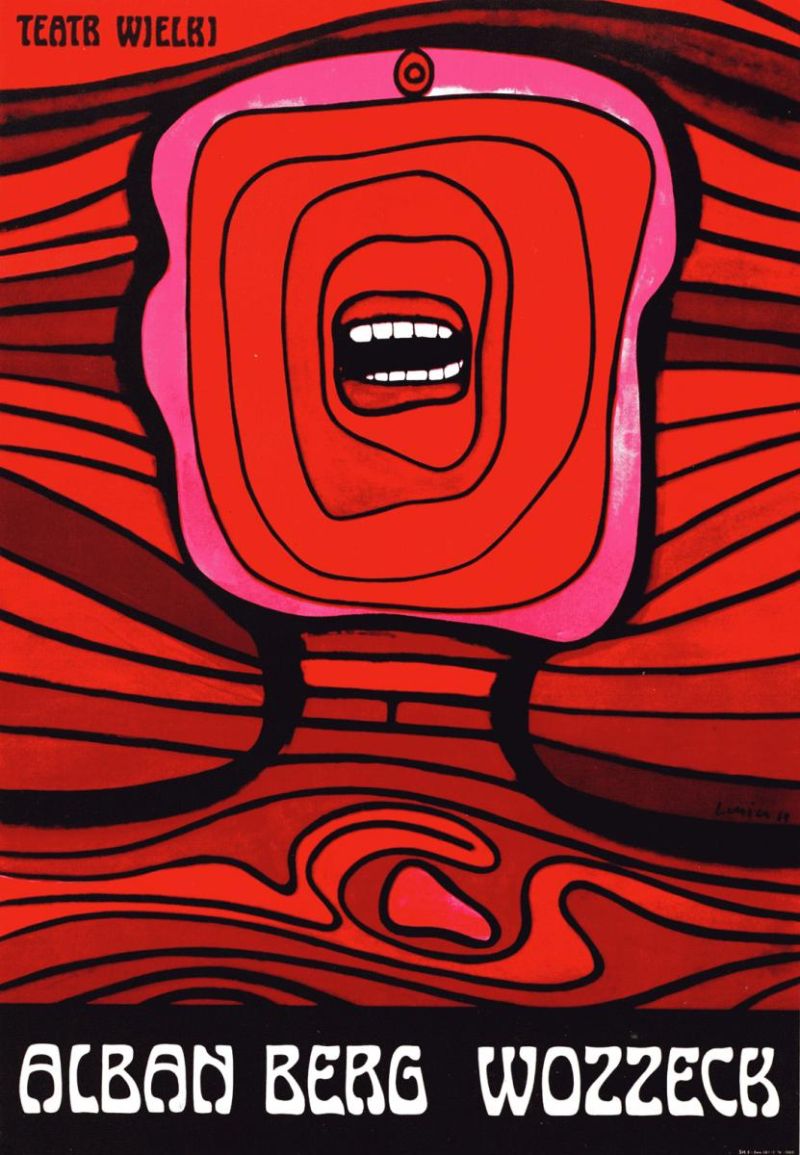Polish poster art in post-war Germany
Mediathek Sorted





















![ill. 22: Tomasz Sarnecki, Solidarność ill. 22: Tomasz Sarnecki, Solidarność - W samo poludnie [High noon], 4 June 1989](/sites/default/files/styles/width_100_tiles/public/assets/images/abb22.jpg?itok=ASCM67H8)
![ill. 23: Magazine ‘Jenseits der Oder’ [Beyond the Oder], Issue 6 ill. 23: Magazine ‘Jenseits der Oder’ [Beyond the Oder], Issue 6 - Published by the German Society for Cultural and Economic Exchange with Poland. Due to the unresolved border status from the perspective of the FRG, the title of the magazine was a provocation.](/sites/default/files/styles/width_100_tiles/public/assets/images/abb23.jpg?itok=xaW1FoEX)
![ill. 24: Jan Lenica, Wizyta starszej pani [A visit from an elderly lady] ill. 24: Jan Lenica, Wizyta starszej pani [A visit from an elderly lady] - Announcement of a theatre performance](/sites/default/files/styles/width_100_tiles/public/assets/images/abb24.jpg?itok=a4ssK6p6)




2. Historic: The original "Polish Wave" and beyond
The foundation stone for the triumphant advance of Polish poster art in the Federal Republic of Germany was laid at the beginning of the 1950s. In addition to magazines and individual book publications, exhibitions were by far the most important medium for its popularization. In 1950 an exhibition of Polish posters was shown throughout the Federal Republic of Germany, with stops in Hamburg, Düsseldorf, Frankfurt/M., Nuremberg and Munich.[5] Amongst others, the journal "Gebrauchsgraphik", published a multi-page report complete with illustrations.[6]
A number of exhibitions of Polish graphic art were held in the following years, but the great boom began after the “Polish October” in 1956. The “Polish Spring in Autumn” not only made the country "fly into the hearts of the West", as Die Zeit wrote at the time,[7] but also sparked an unprecedented interest in contemporary Polish art and culture in the Federal Republic of Germany - a phenomenon that became proverbial among contemporaries as the so-called "Polish Wave". In view of the strained relationship between Poland and West Germany and the somewhat negative policies adopted by the West German government towards Poland, a fascination for the " thaw" in Poland with its cultural blossoming and apparent liberalism that were unique in the former Eastern Bloc played just as much a role as political and moral motives. The fact that frostier winds were already blowing once again through Polish cultural policies in the late 1950s, did not detract from the wave of enthusiasm for Poland in the Federal Republic. Until well into the 1960s, event calendars in West Germany were increasingly filled with listings of Polish music, literature, plays, films and art. There were Polish Weeks on the radio, in towns and cities featuring organised Polish "cultural days", and every few weeks there was an opening of an exhibition of Polish contemporary art somewhere in West Germany.
Exhibitions of Polish poster art formed an integral part of the Polish Wave and constituted a major part of all exhibitions of Polish art in the Federal Republic of Germany: Of the more than 100 exhibitions that can be traced back to 1970 in the Federal Republic of Germany, including West Berlin,[8] a good third were poster exhibitions. Many of them were touring exhibitions, which were shown in several cities in the Federal Republic of Germany, so that the number of venues is much higher.
The following overview of exhibitions of Polish poster art, which took place in 1964-66, provides an impression of their extent.[9] (Fig. 5)
[5] The promoter was the Düsseldorf Helmut-von-Gerlach-Gesellschaft (1953 renamed as the “Deutsche Gesellschaft für Kultur- und Wirtschaftsaustausch mit Polen”), that was set up in 1950 as the West German pendant to the eponymous East German society. I shall come back below to this politically disputed society. On the said exhibition, see also Jeannine Harder, “Polnische Plakatkunst als Medium transnationaler Kunstkontakte und Kulturpolitik im Ost-West-Konflikt”, in: Themenportal Europäische Geschichte, 2015, www.europa.clio-online.de/essay/id/artikel-3789, p. 2 (consulted on 27.6.2016)
[6] Eberhard Hölscher, “Polnische Plakate”, in: Gebrauchsgraphik 1950, No. 10, pp. 44-49
[7] Gösta von Uexküll, “Wunder in Polen”, Die Zeit, 25.10.1956
[8] According to the author's research to date, which was undertaken within the framework of a current (2017) DFG research project at the Central Institute for Art History in Munich on exhibitions of Polish contemporary art in the Federal Republic of Germany 1956-1970.(On the project, see. http://www.zikg.eu/projekte/projekte-zi/ausstellungen-polnischer-gegenwartskunst-in-der-Bundesrepublik-1956-1970, consulted on 23.03.2017)
[9] The following list is based on different sources, particularly contemporary Polish and German periodicals and newpapers, exhibition catalogues and archive material. It makes no claim to be complete and we must assume that there are other exhibitions that have not be included.























































































